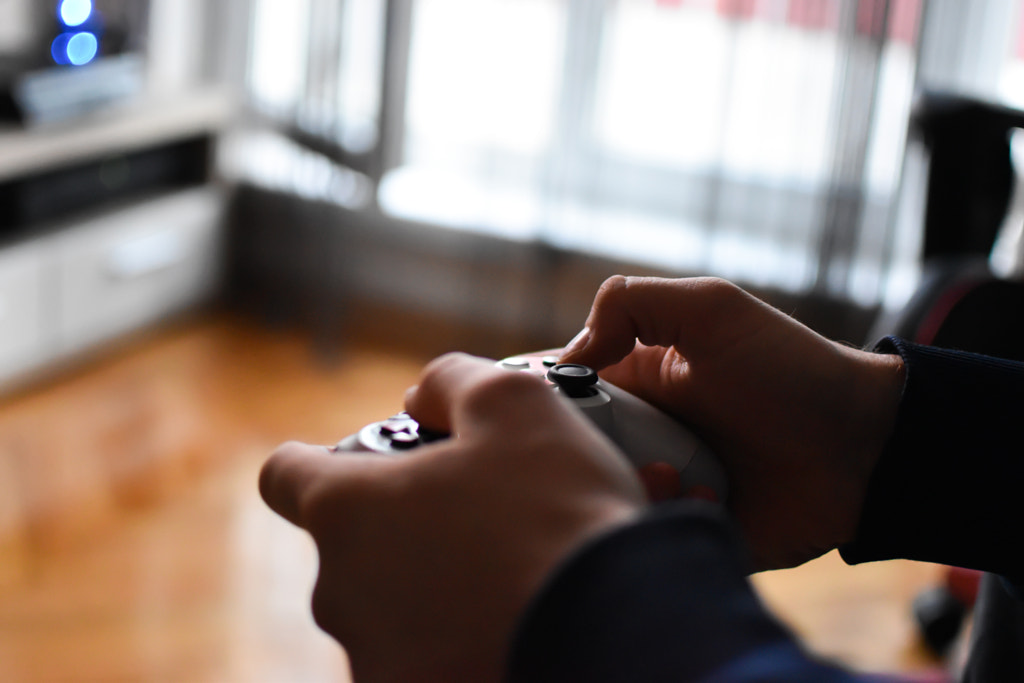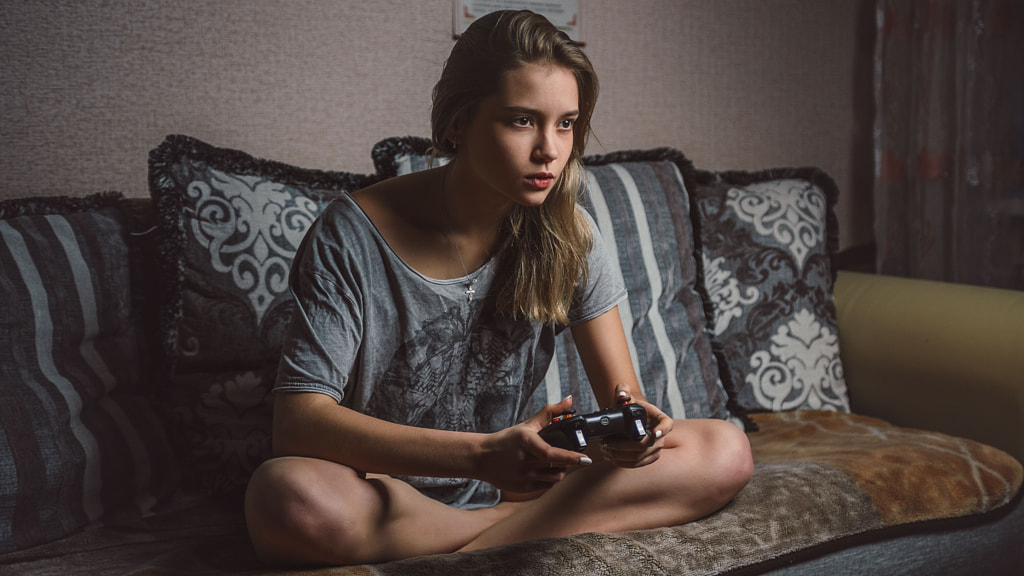Even as many industries struggled to stay afloat, the video game community flourished amid the COVID-19 pandemic and related lockdowns. According to a recent survey of 4,000 US adults conducted by Ipsos for the Entertainment Software Association, 55% of players said they played more games during the pandemic, with an equal percentage saying that gaming provided stress relief. 90% said they’ll continue to play even after the country reopens.
Meanwhile, sales of the Nintendo Switch have continued to soar, up 37% for the fiscal year when compared to the previous year. Gaming trends are helping to reshape visual culture, advertising, and commercial photography in ways both large and small. As noted by Getty Images in a recent trend report on gaming, the gaming industry experienced almost 20% growth during the pandemic, with 75% of households in the US having at least one gamer. Searches on Getty Images for “gamer” went up by 64% year-over-year.
For commercial photographers, gaming-themed sessions offer the perfect opportunity to freshen up your portfolio with trending themes. Below, we’ll discuss just a few things to consider when shooting gaming content for Licensing.
The importance of representation and inclusion in gaming
This spring, Intel, in collaboration with the gaming analytics firm Newzoo, released Diversity and Inclusion in Gaming, a report to help make gaming more accessible for all. They found that 47% of gamers don’t play games they feel aren’t made for them, and 54% feel diversity is important in video game characters, with the latter sentiment especially present within the LGBTQ+ community and those with disabilities. People of color also remain underrepresented as playable characters in games.
This kind of lack of representation has serious consequences. As cited by Getty Images in their trend report, 77% of female gamers experience gender-based discrimination, and 59% of women mask their identities to avoid being the target of sexism. These numbers are perhaps even more shocking when we consider that women make up almost 41% of all gamers in the US and 40-45% of the Asian gaming population.
Research from Neilson suggests that LGBTQ+ households are 25% more likely to own a game console than the general US population and are 91% more likely to be planning on getting a new one in the next year. And yet, as recently as 2015, 65% of LGBTQ+ gamers said they don’t feel that all sexual orientations have ample representation in video game characters.
Thankfully, advertisers are increasingly making steps toward inclusion, with customer searches for the term “female gamer” doubling over the past year on Getty Images. We can also credit communities like Black Girl Gamers, founded by Jay-Ann Lopez, as well as academics like Kishonna Gray, the author of Intersectional Tech: Black Users in Digital Gaming, with increasing visibility in an industry that’s historically centered the voices of white men.
Meanwhile, studios like JumpButton have been able to expand the conversation around social justice and education in gaming. Gamers with disabilities have also taken action by forming communities that are paving the way for a better future. DeafGamersTV, for instance, has worked with developers to show them how to make their games more accessible, while Michael Luckett, aka MikeTheQuad, advocates for visibility and disability awareness in the world of gaming.
Photographers can follow their lead by working with—and celebrating!—gamers who represent a diversity of experiences and perspectives. Make it a priority to include models of all races, gender identities (male, female, non-binary, two-spirit, etc.), abilities, body types, and ages. Speaking of age, the number of gamers over the age of 55 has increased by 30% since 2018, as cited by Getty Images; you can check out our article on building age diversity for more tips.
Social gaming
While there are plenty of photos of solitary gamers alone in a dark room (it’s become a cliche!), gaming is a social activity for many. According to Mobile gaming in the context of COVID-19, a report from Google Play in partnership with Savanta, more than a third of gamers globally are playing more in order to connect with friends and family, with that number rising to 38% in the US. Plus, 34% of new gamers reported playing with friends and family outside of their households. Another survey, the State of Online Gaming 2021 by Limelight Networks, found that 53% of respondents said they made new friends while gaming.
If we return to that survey of US adults conducted by Ipsos for the Entertainment Software Association, we find that 74% of parents report playing video games with their kids at least weekly—a noticeable jump from the 55% who said the same in 2020. Whether playing at home or connecting remotely, people are using games to socialize, make friends, and spend time with loved ones.
Animal Crossing is a famous example, as it allows players to “visit” each other’s towns; in 2020, the game became an unexpected venue for virtual birthday parties. For shoot inspiration, consider Nintendo Switch’s 2020 commercial featuring Brie Larson and her sister playing Animal Crossing via video chat. This is where you can get creative with your models; ask them how they play, and incorporate those ideas into your shoot.
Beyond the console
Getty Images also challenges commercial photographers to get creative when visualizing gaming platforms, from consoles to mobile phones to wearable devices. People play games on their televisions, but they also use handhelds, tablets, and VR headsets. The State of Online Gaming 2021 by Limelight Networks found that mobile games ranked as the most popular among survey respondents globally, so think beyond the typical image of a gamer with a controller looking at the TV.
Work with your models to highlight their spaces, whether they’re playing in the living room or on-the-go during their morning commutes. When shooting recognizable interiors, you need a property release; you can work with your subjects to help style the space, incorporate props, and bring their stories to life. Look for candid, real-life moments and reactions as they’re engaged in the game, and avoid too much posing or exaggerated facial expressions.
When working with any gaming device, it’s important to steer clear of intellectual property issues. These include buttons, designs, and branding on consoles, controllers, and phones, but it also includes any interfaces or artwork in the game itself. You can use creative framing to avoid these problems entirely by focusing on the player(s) rather than the console or device.
For smaller details, you could use plain black tape to obscure specific design elements like charge ports or buttons. Finally, you can use the clone stamp tool to seamlessly edit these details out in post-production. A blank screen works well if you must have the screen in your shot, as image-buyers can then add their own artwork to your image.
Not on 500px yet? Click here to learn about Licensing with 500px.
The post Bringing inclusive gaming to your commercial portfolio appeared first on 500px.
[NDN/ccn/comedia Links]







No comments:
Post a Comment